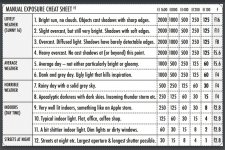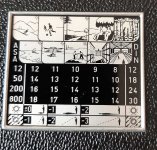- Messages
- 462
- Name
- Dave
- Edit My Images
- Yes
If my disposable camera has typical features, say f9, 1/120s shutter and ASA400 film.... in terms of the sunny 16 rules, does that place the ideal (outdoor) lighting between partly overcast (light shadows) and heavy overcast? (nearly 3.5 to 4 stops more exposure than that needed for full sun).


